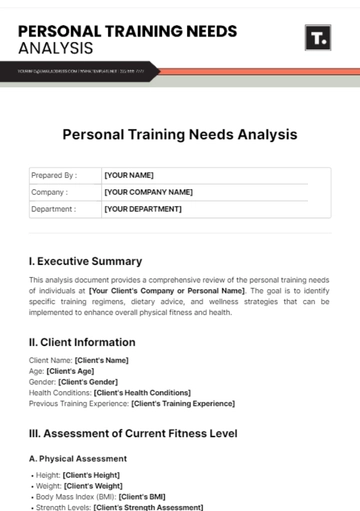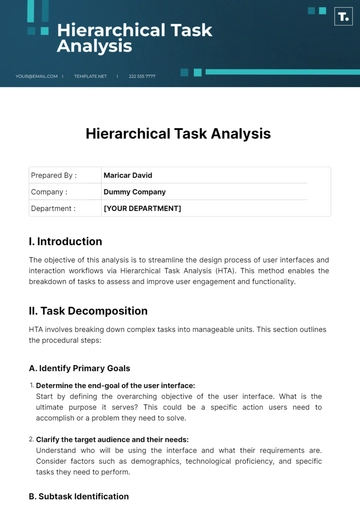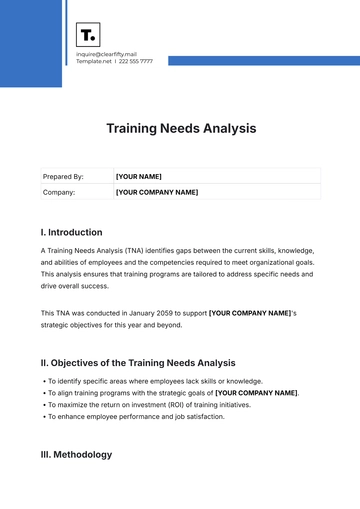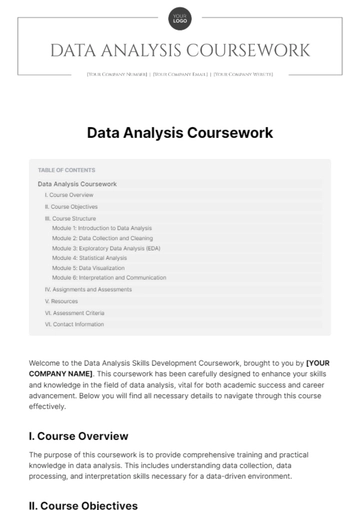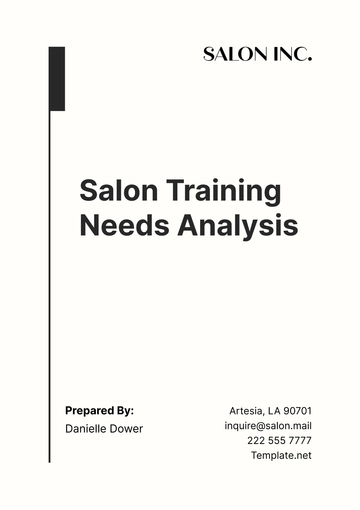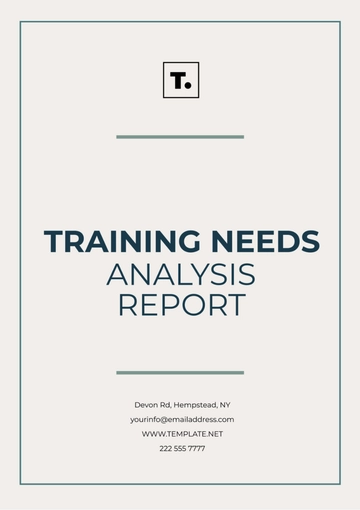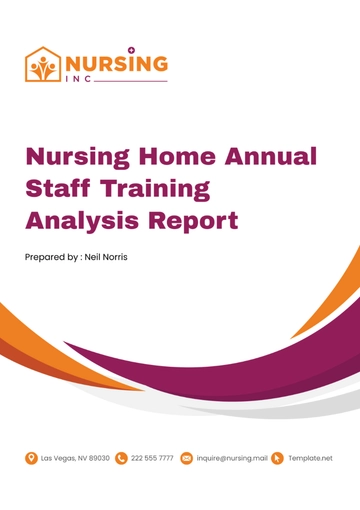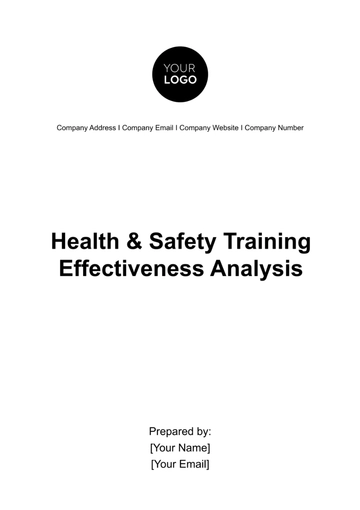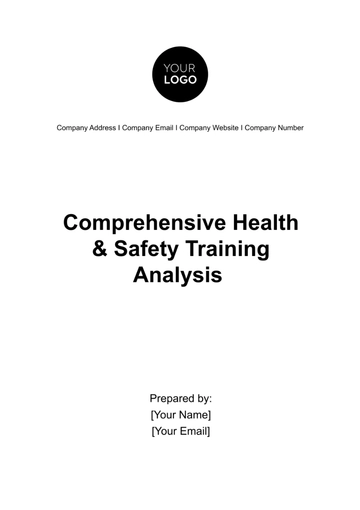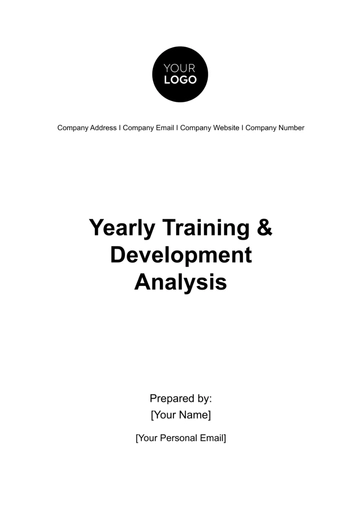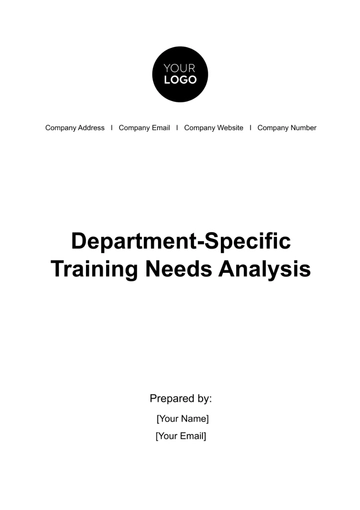Free Yearly Training and Development Analysis HR

EXECUTIVE SUMMARY
This Yearly Training and Development Analysis report is an in-depth study of the various training initiatives undertaken by [Your Company Name] over the past fiscal year. The report is segmented into key areas such as program effectiveness, employee participation, and return on investment (ROI) with the primary aim of assessing the impact of these training modules on both employee performance and organizational goals. We utilize a combination of quantitative and qualitative methods, including but not limited to surveys, participation rates, and financial metrics to offer a robust evaluation. Based on the gathered data, the report culminates in actionable recommendations designed to enhance the efficacy and reach of training programs for the upcoming year.
INTRODUCTION
As part of [Your Company Name]'s unwavering commitment to operational excellence and employee growth, significant investments have been made in our training and development programs. This comprehensive report aims to delve into multiple aspects of these initiatives, examining performance metrics, collating and interpreting employee feedback, and evaluating the overall impact on our organizational productivity and culture.
By providing an analytical overview of our training activities conducted over the past year, we seek to identify strengths, uncover areas for improvement, and offer valuable insights that can shape the training landscape for the coming year. The ultimate objective is to ensure our training modules are aligned with both employee needs and organizational goals.
OBJECTIVES
In order to provide a comprehensive analysis of our training and development initiatives, this report sets out with specific objectives that aim to evaluate various dimensions of our programs. The insights gleaned from meeting these objectives will inform our strategy moving forward, allowing us to make data-driven decisions that benefit both the employees and the organization as a whole. Below are the key objectives:
Evaluate the Effectiveness of Training Modules:
One of our foremost objectives is to assess how well our training programs are achieving their intended outcomes. This involves examining the content quality, trainer effectiveness, and overall alignment with organizational objectives. Metrics such as employee performance improvement, knowledge retention, and skill acquisition will be considered for this evaluation.
Measure Employee Participation:
Employee engagement is a crucial factor in the success of any training program. This objective seeks to measure the rate of participation across different departments and job roles within the company. High participation rates generally indicate that employees find value in the training programs, which in turn suggests that the training modules are fulfilling their intended purposes.
Calculate ROI for Each Training Module:
Understanding the return on investment (ROI) is essential for justifying the costs associated with training and development. The ROI will be calculated by comparing the costs of implementing each training module against measurable outcomes such as increased productivity, reduced errors, and other relevant performance indicators. This quantitative measure will provide a concrete metric for evaluating the financial feasibility and benefits of each training program.
By thoroughly examining each of these objectives, we aim to offer a holistic view of the state of training and development at [Your Company Name], thereby paving the way for data-driven improvements and strategic planning for the future.
TRAINING PROGRAMS CONDUCTED
The past year saw the implementation of several training programs, all tailored to meet the unique needs of [Your Company Name]'s diverse employee base. These programs were designed with utmost precision to ensure the development and enhancement of vital skills. Two of the most important programs we focused on were HR Software Training and Compliance Training. Below are the details and performance metrics for each.
HR Software Training
This program aimed at familiarizing employees with the HR software tools used at [Your Company Name] for various HR functions like employee management, payroll, and benefits administration.
Key Metrics
Metric
Data
Total Participants
200
Average Rating
4.5 out of 5
Completion Rate
95%
Total Participants: 200
A total of 200 employees participated in the HR Software Training program, which is an indicator of the program’s reach and necessity within the company.Average Rating: 4.5 out of 5
Employee feedback was overwhelmingly positive, with an average rating of 4.5 out of 5, showcasing the efficacy and value of the training content and instructors.Completion Rate: 95%
The high completion rate of 95% signifies that the program was not only well-received but was also beneficial enough to retain participant engagement till the end.
Compliance Training
Compliance Training focuses on educating employees about the laws, regulations, and company policies that apply to their day-to-day job responsibilities.
Key Metrics
Metric
Data
Total Participants
250
Average Rating
4.2 out of 5
Completion Rate
90%
Total Participants: 250
We had a turnout of 250 employees for the Compliance Training program, which suggests the critical nature of this training across all roles and departments.Average Rating: 4.2 out of 5
While the average rating was slightly lower than the HR Software Training, a 4.2 out of 5 is still an excellent score and suggests that the training was well-executed and met employee expectations.Completion Rate: 90%
With a completion rate of 90%, this program also succeeded in retaining participant interest and fulfilling its objectives.
By continually assessing these key performance metrics, we aim to further refine and enhance the training programs at [Your Company Name] to better align with organizational goals and employee needs.
ANALYSIS METHODOLOGY
For a robust and comprehensive understanding of the impact of our training programs, multiple analysis methodologies were employed. We used a blend of quantitative and qualitative approaches to offer a holistic view of the programs' effectiveness, reach, and value. Surveys were administered before and after each training session to gauge employee expectations and satisfaction levels.
These surveys included both Likert-scale questions for quantitative analysis and open-ended questions for qualitative insights. Participation rates were meticulously recorded to measure employee engagement across various departments and job roles. In addition, post-training assessments were conducted to evaluate the knowledge and skills acquired by the participants.
These assessments helped quantify the learning outcomes, thereby providing a clear measure of effectiveness. The data from these methods were then collated and analyzed to derive actionable insights that not only reflect the current state of our training programs but also help guide future improvements and strategies.
FINDINGS
After conducting a rigorous analysis using the outlined methodologies, we arrived at several key findings. These findings have been categorized into quantitative and qualitative data to provide a multifaceted view of the training and development initiatives at [Your Company Name].
Quantitative Findings
Our quantitative metrics point toward a high level of employee engagement and strong return on investment for both of the major training programs offered.
Qualitative Findings
Employee feedback suggested that training materials were up-to-date and that trainers were highly competent.
RECOMMENDATIONS
Based on the comprehensive findings from our analysis, we've identified specific areas where improvements can be made to better meet the training and development needs at [Your Company Name]. Our recommendations are designed to enhance the effectiveness and return on investment of our training programs.
Update the HR Software Training Module
While the HR Software Training program received high ratings and had a high completion rate, there's always room for improvement to keep up with the rapidly evolving HR tech landscape. We recommend updating the training materials and content to include new features, updates, or regulations related to the software. Additionally, consider incorporating more interactive elements like real-world scenarios or hands-on exercises to make the training more engaging and effective.
Conduct Quarterly Refresher Courses
Both the HR Software Training and Compliance Training showed high completion rates, but ongoing reinforcement is crucial for long-term retention and application of knowledge. As a result, we recommend conducting quarterly refresher courses for all employees who have completed these training programs. These courses should be designed to review key concepts, introduce any new updates, and provide employees with an opportunity to clarify any doubts they may have. Refresher courses can be shorter and more focused, and they can be delivered in various formats—be it online, in-person, or a hybrid model—based on what suits the organization best.
By implementing these recommendations, we aim to elevate the quality and impact of [Your Company Name]'s training programs, thereby aligning them more closely with our organizational objectives and employee development needs.
CONCLUSION
Our in-depth Yearly Training and Development Analysis has revealed that the training programs at [Your Company Name] have largely been successful in achieving their intended objectives. High completion rates and overwhelmingly positive employee feedback indicate a well-executed and impactful approach to training and development within the organization. However, as the business environment and employee needs evolve, so too must our training programs. Our recommendations for updating the HR Software Training module and introducing quarterly refresher courses aim to ensure that these programs remain highly effective and relevant. By making these slight but impactful modifications, we are confident that our training initiatives will continue to enrich our workforce and contribute to the overall success and competitiveness of [Your Company Name] in the future.
APPENDIX
Survey Questionnaire
Post-Training Evaluation Survey for [Your Company Name]
Please take a few minutes to fill out this survey. Your feedback is valuable for the improvement of our training programs.
Which training program did you attend?
HR Software Training
Compliance Training
How would you rate the relevance of the training content to your job role?
Poor
Fair
Good
Very Good
Excellent
How knowledgeable was the trainer on the subject matter?
Poor
Fair
Good
Very Good
Excellent
How engaging was the training?
Not Engaging
Somewhat Engaging
Engaging
Very Engaging
Extremely Engaging
Did the training improve your understanding of the subject matter?
Strongly Disagree
Disagree
Neutral
Agree
Strongly Agree
Additional Comments:
(Please provide any additional comments or suggestions for improvement here)
Financials
Financial Report for Training Programs at [Your Company Name]
Financial Metric | HR Software Training | Compliance Training |
Total Budget Allocated | $[x] | $[x] |
Total Budget Allocated:
The total budget allocated for the HR Software Training was $[x] and for Compliance Training, it was $[x].
Actual Expenditure:
The actual expenditure for the HR Software Training was $[x], yielding an [x]% ROI. For Compliance Training, the expenditure was $[x] with a [x]% ROI.
Return on Investment (ROI):
The ROI for HR Software Training stands at [x]%, indicating a significant return. Compliance Training also yielded a noteworthy ROI of [x]%.
This financial data reinforces the effectiveness of our training programs, suggesting that the investment made in these initiatives is both justified and fruitful.
- 100% Customizable, free editor
- Access 1 Million+ Templates, photo’s & graphics
- Download or share as a template
- Click and replace photos, graphics, text, backgrounds
- Resize, crop, AI write & more
- Access advanced editor
Enhance HR efficiency with Template.net's Yearly Training & Development Analysis HR Template. Editable and customizable, it empowers tailored assessments. Utilize our online AI Editor Tool to seamlessly adapt content. Streamline HR processes and optimize workforce growth strategies. Unlock potential with insightful data-driven analyses. Elevate your HR management today!



